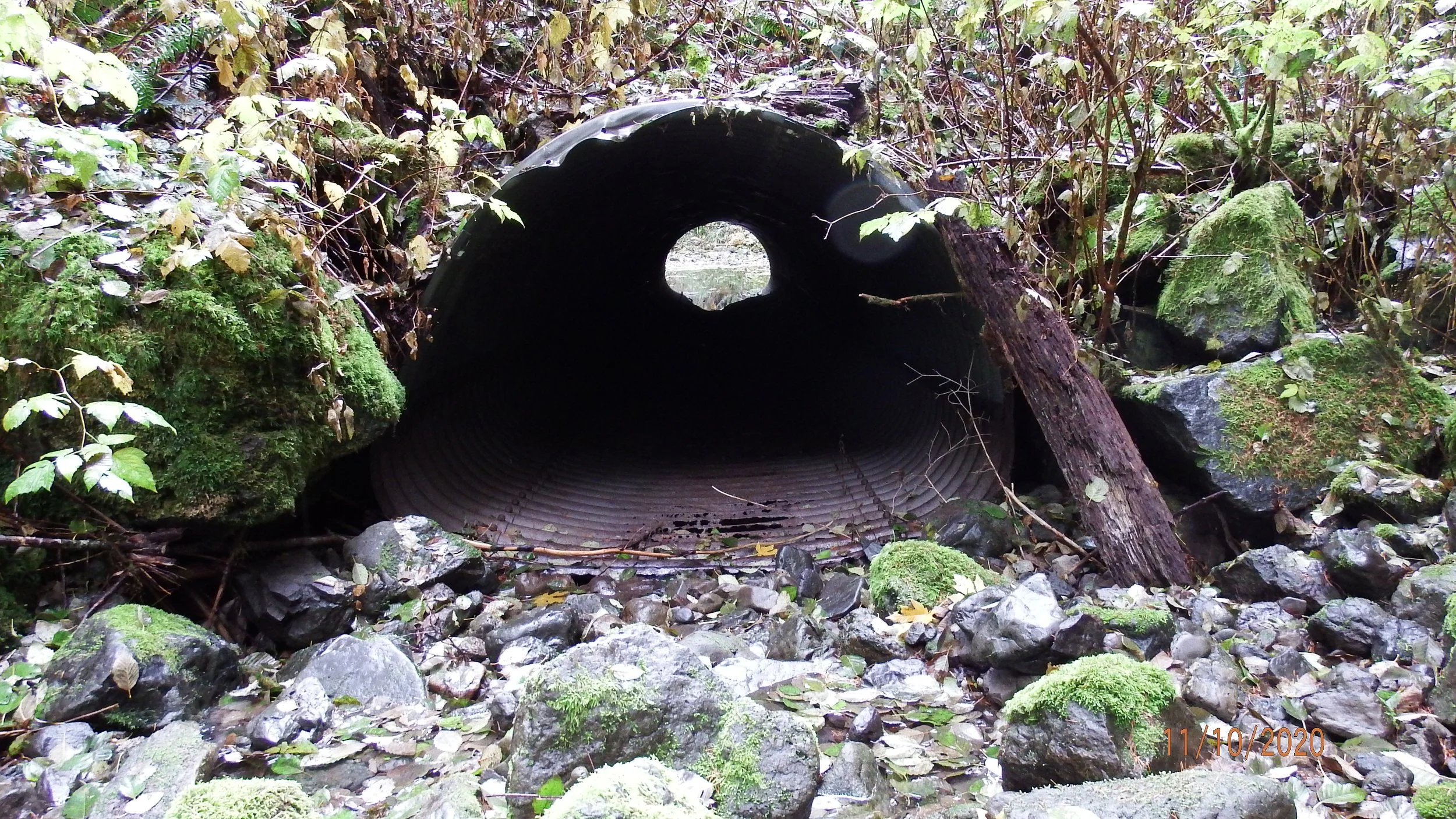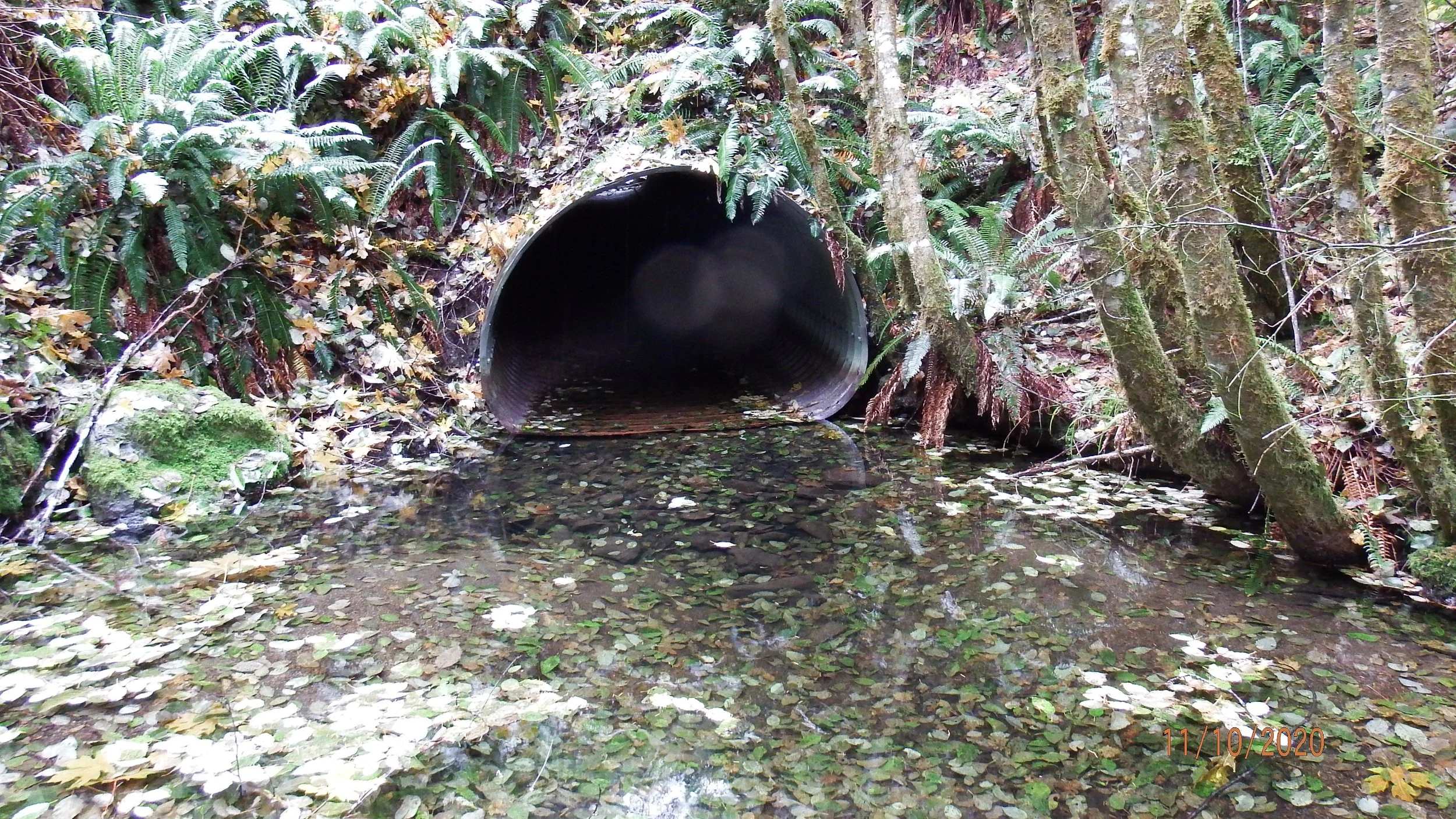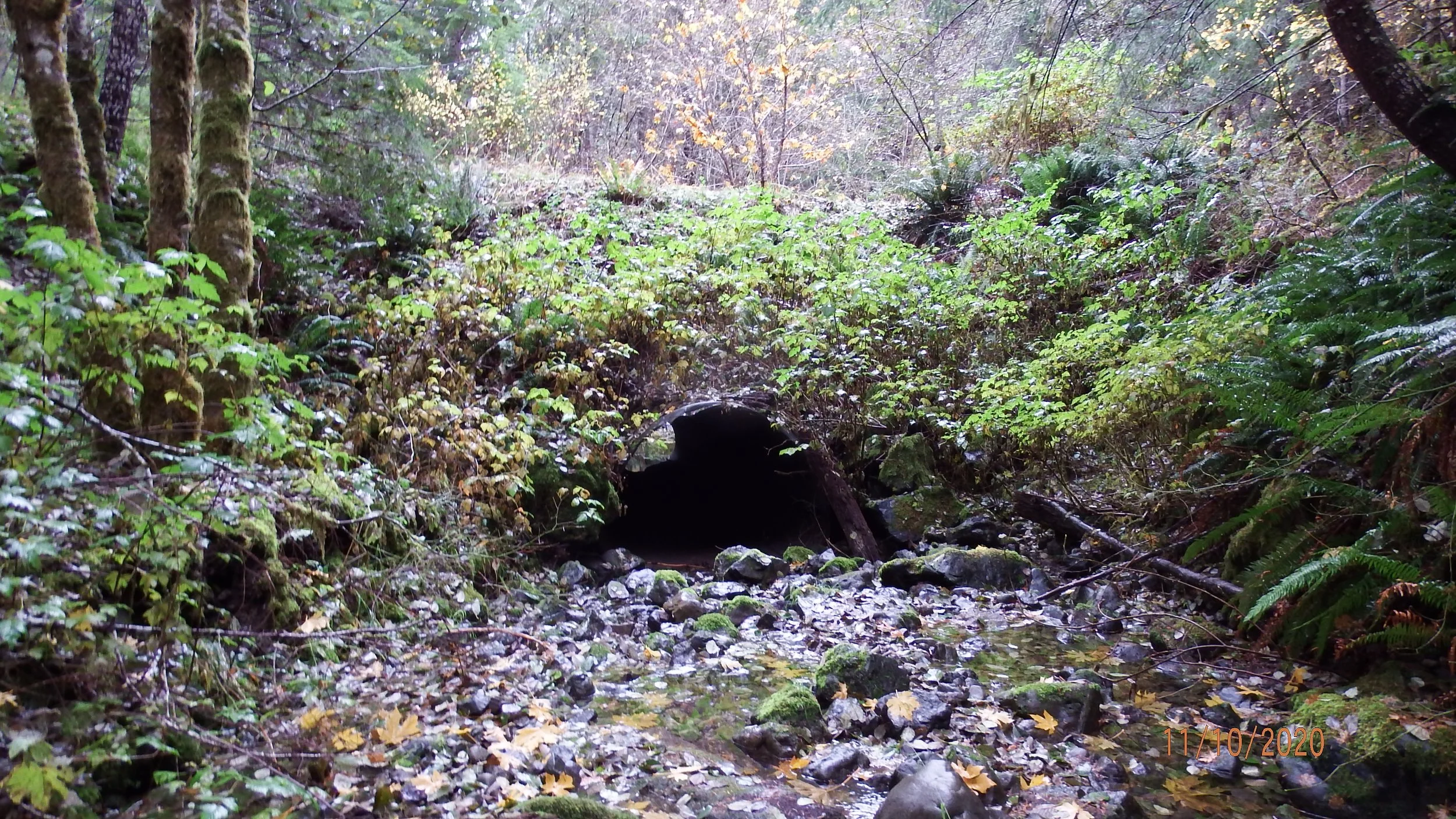Completed Projects
Walker Creek Culvert - 2022
The West Fork Cow Creek Watershed Action Plan was developed to strategically direct restoration project funding to recover or restore native fish populations in the West Fork Cow Creek Watershed. The Action Plan developed a list of potential restoration projects throughout the watershed and prioritized them with partners after collecting information on fish distribution and stream crossing function. Seven culverts were identified as coho salmon barriers and designs were developed to replace each culvert. Walker Creek was identified as the next culvert to replace based on its size and location in the watershed and its ability to provide passage to quality upstream habitat. The stream was noted as being somewhat steep, but with lots of pools and deposits of stream gravels. The stream was also sampled at the culvert site for fish. Coho, steelhead and unidentified trout were found in the outlet pool of the culvert. This culvert replacement resulted in an additional 0.55 miles of habitat.
Rice Creek Restoration - 2018
Partnership for the Umpqua Rivers, Roseburg District BLM and a local private ranch teamed up to target 2.0 miles of Rice Creek, a tributary to the South Umpqua River, for fish restoration. Rice Creek represents a drainage type, common in Douglas County, with ranch lands along all the streams and valley bottoms and forested headwaters. It is a gravel rich, low gradient stream and has the potential to provide high quality spawning and rearing habitat for Oregon Coast coho, winter steelhead, fall Chinook and other native fish, but is currently in poor condition. Project work included the placement of logs (19), trees (103) and large boulders (1,200 tons) at a total of 42 sites on private and BLM lands. The ranch worked with CREP federal fencing program to exclude livestock from the streams and the fence was put up in early 2019, and DEQ funds were used to place bridges donated by the ranch.
West Fork Canyon Creek Instream Restoration - 2018
West Fork Canyon Creek Culvert - 2011
This site was identified by the engineering department at the Roseburg District BLM office after a review of the effective drainage size of culverts across the district. This culvert was rated to pass a 25-year flood event and the district strives for culverts to pass a 100-year flood event. The BLM engineers designed the new crossing to pass flows greater than the 100-year event. A Rapid-Span bridge was chosen. This prefabricated bridge came from Canada. It consists of two large beams, stabilizing cross braces, concrete headwalls, and a concrete deck (Figure 1, 3, 4). The structure is pre-engineered to fit the site perfectly. The BLM contracted the project to Johnson Rock Products, Inc (JRP). a locally known and respected construction firm. JRP has built many prefabricated bridges and installed many culverts for PUR and the BLM to improve fish passage in the Umpqua. Replacing the culvert provided maintenance to the site that provided safer access for future private and governmental land management access and commercial haul from private and BLM lands beyond the crossing. The bridge also enables BLM to better meet Oregon water quality standards for sedimentation by eliminating the risk of the culvert’s failure due to its age and size. The entire project contributes to BLM’s continuing efforts at collaboration in meeting the goals of Oregon’s Salmon Plan, by re-opening upstream habitat reaches.
Upper Dean Creek Instream Restoration - 2010
There are more than 11 miles of fish habitat in the Dean Creek watershed which are accessible to coho and winter steelhead. This watershed is important for coho spawning habitat, summer rearing and over-winter refuge due to its location in the estuary and the stream’s low gradient, which is preferred by these species. Resident and anadromous cutthroat trout utilize all available habitats in this stream. Fish also use the stream as refuge habitat from high mainstem Umpqua River flows (up to 200,000 cfs) during their upstream migration. The largest limiting factor in this system is the lack of large woody debris. The system is gravel rich, but lacks diversity due to the limited amount of woody material in the stream channel. The addition of large would has created deep pools for critical summer rearing habitat and provides much needed refuge for juvenile fish during high winter flows. This project is part of a multi-phase basin-wide restoration effort undertaken by PUR. Other efforts include the Dean Creek Phase I project, which placed LWD in the portion of Dean Creek in the Elliott State Forest that is accessible by vehicle. Additionally, in 2009 we successfully completed the Dean Creek wetlands project, which consisted of LWD placements and spruce planting in the Dean Creek tidal wetland.
Harvey Creek Instream Restoration - 2010
There are almost five miles of fish habitat in the watershed which are accessible to coho and winter steelhead. This watershed is important for coho spawning habitat, summer rearing and over-winter refuge due to the low gradient preferred by these species. There is anecdotal evidence that Chinook spawn in the lowest reaches of Harvey Creek. Resident and anadromous cutthroat trout utilize all available habitats in this stream. Fish also use the stream as refuge habitat from high mainstem Umpqua River flows (up to 200,000 cfs) during their upstream migration. Large numbers of young salmonids were seen in late February and early March directly around the new structures.
Morgan Creek Culvert Replacement - 2009
Morgan Creek is a low gradient stream that has two miles of high intrinsic potential habitat for OC coho and an additional mile of winter steelhead habitat. Two culverts located on Morgan Creek were measured and ranked for the severity of blocking fish passage. These culverts ranked as the 6th and 33rd worst culverts for fish out of 163 total surveyed in the South Umpqua River 5th field watershed. The instream habitat in Morgan Creek upstream of the culverts was not in good shape and invasive blackberry plants were abundant where riparian trees were scarce. In 2009, PUR, ODFW and three private landowners worked together to enhance this stream and resolve legacy fish passage issues. The two culverts were replaced with half-round multiplate culverts placed on pre-fabricated concrete footings. Across the two upper landowners, 1.5 miles of instream habitat was enhanced by placing 139 logs and 249 boulders at 28 sites. Riparian blackberry was cleared across 1/2 mile of the project area and 250 native plants were replanted within 13 cattle exclosures. On the lowest property, ivy and blackberry were cleared and the area replanted with native plants.








































































































